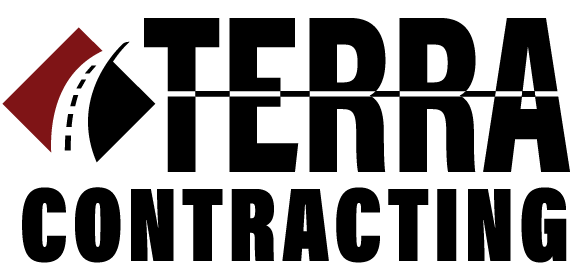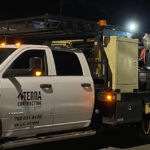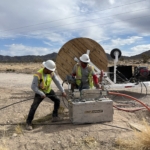Asphalt surfaces play a critical role in maintaining safe and functional infrastructure. Over time, however, pavement damage is inevitable due to heavy traffic, environmental factors, and the need for underground utility installations. In Las Vegas, Nevada, where Terra Contracting has over 30 years of experience, the intersection of asphalt paving and underground utilities requires a specialized approach to remediation. Restoring damaged asphalt properly is essential to preserving structural integrity, safety, and longevity.
Understanding Asphalt Remediation
Asphalt remediation involves restoring damaged or compromised pavement to its original condition or better. This is not merely a surface repair; it is a comprehensive process that addresses underlying causes to ensure long-term durability. Common forms of damage requiring restoration include cracking, potholes, rutting, and surface deformation. These issues can worsen significantly if left unchecked, leading to more extensive and costly repairs.
The Role of Underground Utilities in Asphalt Damage
Las Vegas’s growing infrastructure relies heavily on underground utilities like water, gas, fiber optics, and sewer lines. Installing or maintaining these utilities often involves cutting into existing asphalt surfaces. Improperly restored utility cuts can weaken the pavement structure, resulting in accelerated deterioration. Studies have shown that if utility cuts are not correctly addressed, pavement life can be reduced by up to 50%.
As an underground utility and asphalt paving specialist, Terra Contracting understands the importance of integrating utility work with proper pavement restoration to ensure seamless, durable results. Effective remediation minimizes disruption, extends pavement life, and maintains safety for vehicles and pedestrians.
When to Restore Damaged Asphalt Surfaces
Determining the right time to perform asphalt remediation is crucial. Signs that indicate the need for immediate action include:
- Cracking: Alligator, transverse, or longitudinal cracks suggest underlying structural issues or material fatigue.
- Potholes: These pose safety hazards and can result from water infiltration, poor drainage, or insufficient compaction.
- Surface Deformation: Rutting and depressions can indicate subgrade failure or heavy loads beyond design limits.
- Utility Repairs: After utility installation or repairs, proper restoration is necessary to avoid weak points in the pavement.
Techniques for Asphalt Remediation
- Proper Backfilling and Compaction: After utility work, trenches must be backfilled with suitable material and compacted to match the surrounding subgrade. Poor compaction leads to settling, which can cause surface dips or cracking.
- Milling and Overlay: This method involves removing the damaged top layer of asphalt and replacing it with a fresh layer. Milling is commonly used to address surface-level damage without affecting the base.
- Full-Depth Patching: When damage extends to the subgrade, full-depth patching replaces the asphalt down to the base layer, ensuring the new section is structurally sound.
- T-Section Patching: To restore utility cuts, T-section or bridge patching reinforces the edges by cutting beyond the trench to create a stronger joint. This helps distribute loads and prevents weak points.
- Joint Sealing: Sealing the joints between new and old pavement prevents water from seeping in and damaging the base layer, which can lead to further cracking or potholes.
Advanced Techniques for Utility and Asphalt Work
Terra Contracting employs innovative methods such as hydro excavation and directional drilling. These techniques allow for precise underground utility installations with minimal surface disruption. By reducing the need for extensive pavement cuts, these methods help preserve asphalt integrity and reduce the frequency of repairs.
Benefits of Proper Asphalt Remediation
- Extended Pavement Life: Properly restored asphalt lasts longer and maintains its performance, reducing future repair costs.
- Safety: Smooth, intact surfaces enhance safety for drivers, cyclists, and pedestrians.
- Cost Savings: Addressing damage promptly avoids more extensive and expensive repairs later.
- Aesthetics and Functionality: Well-maintained asphalt contributes to a professional appearance and reliable infrastructure.
Remediation of damaged asphalt surfaces is essential to maintaining safe, functional infrastructure, especially when underground utilities are involved. Terra Contracting’s expertise in both underground utility work and asphalt paving ensures that every project is completed with precision and durability in mind. By employing best practices in backfilling, patching, and sealing, Terra Contracting delivers long-lasting solutions that serve Las Vegas communities for years to come. Contact Terra Contracting today to request a bid.


